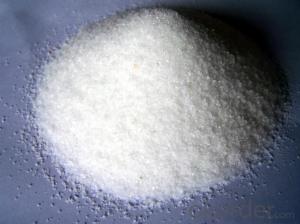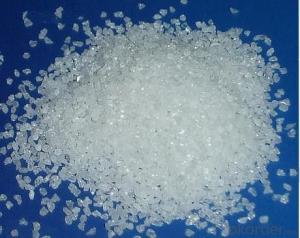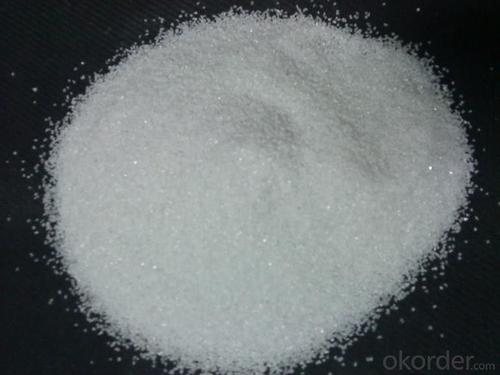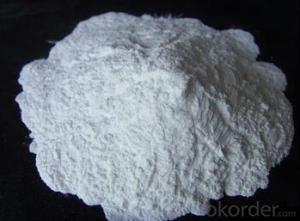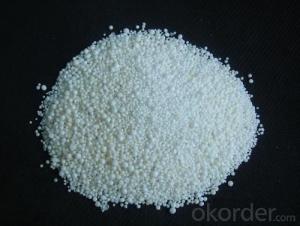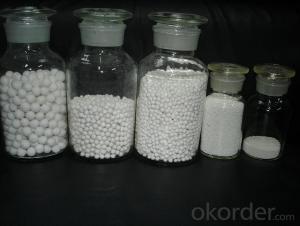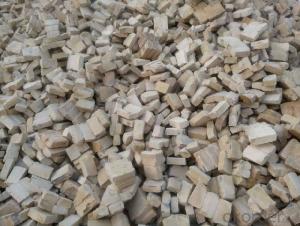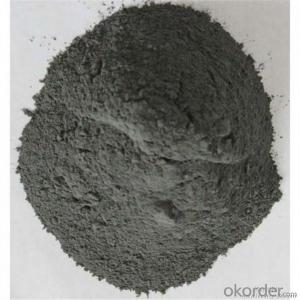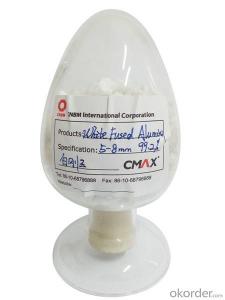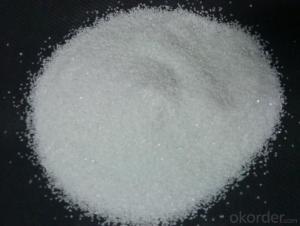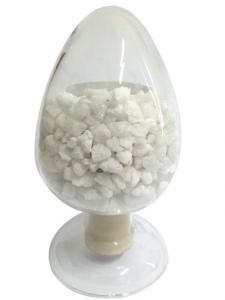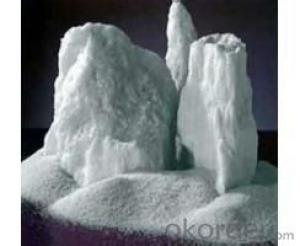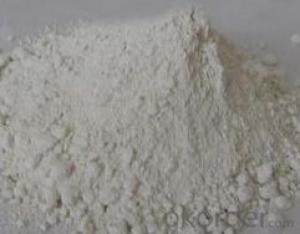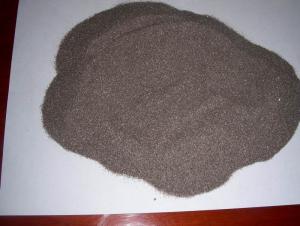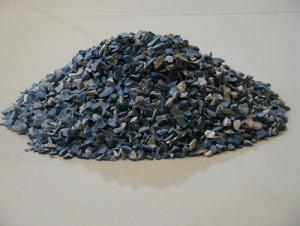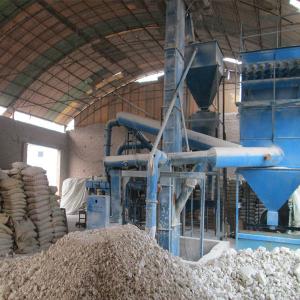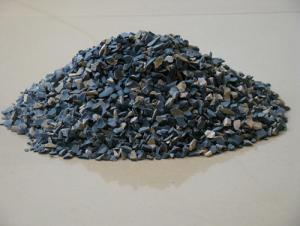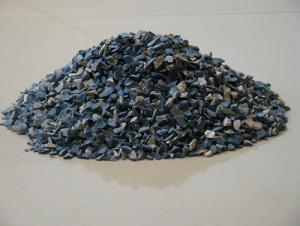Raw Materials for Refractory:White Fused Alumina
- Loading Port:
- Tianjin
- Payment Terms:
- TT OR LC
- Min Order Qty:
- -
- Supply Capability:
- 1000MT m.t./month
OKorder Service Pledge
Quality Product, Order Online Tracking, Timely Delivery
OKorder Financial Service
Credit Rating, Credit Services, Credit Purchasing
You Might Also Like
Specification of white fused alumina
Item | B.D(g/cm3) | Apparent Porosity | Chemical Composition | |||
AL2O3 | Fe2O3 | SiO2 | NaO2 | |||
WFA | 3.7 | 7.8% | 99.2%min | 0.1%max | 0.2%max | 0.3%max |
Packaging & Shipping
In 1MT jumbo bag or as the buyer request.
We ship the cargo in 20' GP containers,each container loads 25MT/20bags.
Application of white fused alumina
1.Light-weight insulating refractories
2.Shaped and unshaped refractories
3.Pre-cast shapes and castables
4.High Alumina Refractory mixes and gunning mixes
- Q: How many kinds of A-level fireproof and thermal insulation materials are there?
- A-level non-combustible materials are mostly inorganic thermal insulation materials, as well as some organic compound materials can also be non-combustible; but if the convenient construction is required, panels are exempted, you can only choose inorganic thermal insulation mortar.
- Q: Refractory net
- Foreign enterprises created not only for profit, but a career, hope to be able to last forever; domestic, especially private enterprises, most of them do not have such a vision, only to a loophole, cash, so never to do this industry.Welcome to discuss the statements of a school.
- Q: Who knows the model of fireproofing materials?
- Models of fireproofing material: PC 6555 Bayer 6555 fireproofing PC 6557 Bayer 6557 fireproofing PC 6485 Bayer 6485 fireproofing PC 6385 Bayer 6385 fireproofing PC 6265 Bayer 6265 fireproofing PC 2865 Bayer 2865 fireproofing PC 4610 Dow 4610. Hope my answer will be helpful to you!
- Q: What's the definition of fire endurance of the fire-resistant coating for steel structure?
- 1. Fire endurance. Conduct fire resistance test of any building component according to the standard time-temperature curve, and the time when it is subjected to the fire to the time when it loses support capability or fire insulation function or its integrality is destroyed is referred to fire endurance. 2. Steel has relatively low fire endurance which is usually 0.25h only, namely 15 minutes; 3. Of steel structure buildings, steel can be used as beams, pillars, etc. but its fire endurance is not enough (usually these components have higher requirement on fire endurance, and take pillar as an example, it is usually demanded that the fire endurance should be 2-3h), and under this condition, it needs to brush fire retardant coating so as to raise the fire endurance. As to the specific quantity or types of the fire retardant coating, it is decided upon the actual conditions. In short, the building material needs to meet the required fire endurance of the buildings.
- Q: What is the material composition of the new fire-resistant coating?
- New fire-resistant coating generally consists of base material, dispersion media, flame retardants, fillers, additives (plasticizers, stabilizers, waterproofing agents, moisture, etc.). (1) Base material is the basis of the composition of the coating, and it is the main film-forming substance, playing a decisive role in coating performance . For fire-resistant coating, its base material must be capable of matching with the flame retardant to constitute an organic fireproofing system. The base material commonly employed at home and abroad includes inorganic and organic film-forming material. Inorganic film-forming materials include silicate. Si03, K2 Si03Na2 Si03), silica and phosphate [Al. (HPO.). ] ect. There are a wide range of organic film-forming substance, usually flame retardent organic synthetic resins, such as phenolic resins, halogenated alkyd resins, polyester, halogenated olefin resins (such as vinyl chloride resin), amino resin (melamine resin, urea resin, etc. ), tar-based resins, furan resins, heterocyclic resins (e.g., polyamide-imide, polyimide, etc.), organic elements resins (e.g. silicone resin), rubber (halogenated rubber such as chlorinated natural rubber) and so on. There are numerous latex taking water as solvent. www.hc3600.
- Q: What are the raw materials of refractory?
- Of course, different types have different raw materials: Magnesite (the electric?smelting: alkaline refractory, magnesia-carbon bricks, alkaline, high-purity) + crystalline flake graphite + phenolic resin + additive (silicon powder, aluminite powder, silicon carbide powder, or high-temperature asphalt,etc.) , acidic refractory: The neutral is not easy to answer. such as. You can check out the classification, such as
- Q: what is the fireproofing material of engine room? who knows it ?
- machine room fireproofing materials include: Inorganic binder: The main material includes sodium silicate, gypsum, phosphates, cement,ect.; refractory mineral filler: aluminium oxide, asbestos powder, calcium carbonate, perlite, cornstarch, ect.; nonflammable organic resin: it mainly includes polyvinyl chloride, perchloro-ethylene, chlorinated rubber, neoprene latex, epoxy resin, phenol resin, ect.. nonflammable fireproof addictive: it mainly has phosphorus, halogens, nitrogen organic compounds (chlorinated paraffins, tributyl phosphate,deca-brominated diphenyl ether), and boron series (boric acid, zinc borate, aluminium borate), antimony system, aluminium series, zirconium system, etc. inorganic compounds.
- Q: The performance of refractory material
- The mechanical properties of refractory material include withstand voltage strength. The structure properties of the refractory materials include porosity, bulk density, such as thermal emission rate. The physical properties of the refractory materials include temperature conductivity structure performance, wear resistance, hiphotos, electrical conductivity, creep, the hydration resistance, adhesive strength.
- Q: How many types of fire-resistant material?
- 1. Acid fire-resistant material refers to one with more than 93% SiO2. It is featured by resistance to the corrosion of acidic slag ad high temperature and easy to react with alkaline molten slag. 2. Alkaline refractory material generally refers to one with magnesium oxide or magnesium oxide and calcium oxide as the main component. It has high refractoriness and strong resistance to basic slag. 3. Silicate aluminum refractory material refers to one with SiO2, Al2O3 as the main component. According to the content of Al2O, it can be divided into three categories: half siliceous (15-30% Al2O3), clay (Al2O3 30 ~ 48%), high aluminum (more than 48% of Al2O3). 4. Fused cast refractory material refers to shaped refractory products made by high temperature melting and casting.
- Q: Is it necessary for the frame of glass fireproof door to be crammed with fire-proof material?
- Fire resistance steel door——means that use a cold rolled steel sheet as door frame, door plank and framework, and stuff a door leaf with incombustible material.
Send your message to us
Raw Materials for Refractory:White Fused Alumina
- Loading Port:
- Tianjin
- Payment Terms:
- TT OR LC
- Min Order Qty:
- -
- Supply Capability:
- 1000MT m.t./month
OKorder Service Pledge
Quality Product, Order Online Tracking, Timely Delivery
OKorder Financial Service
Credit Rating, Credit Services, Credit Purchasing
Similar products
Hot products
Hot Searches
Related keywords

